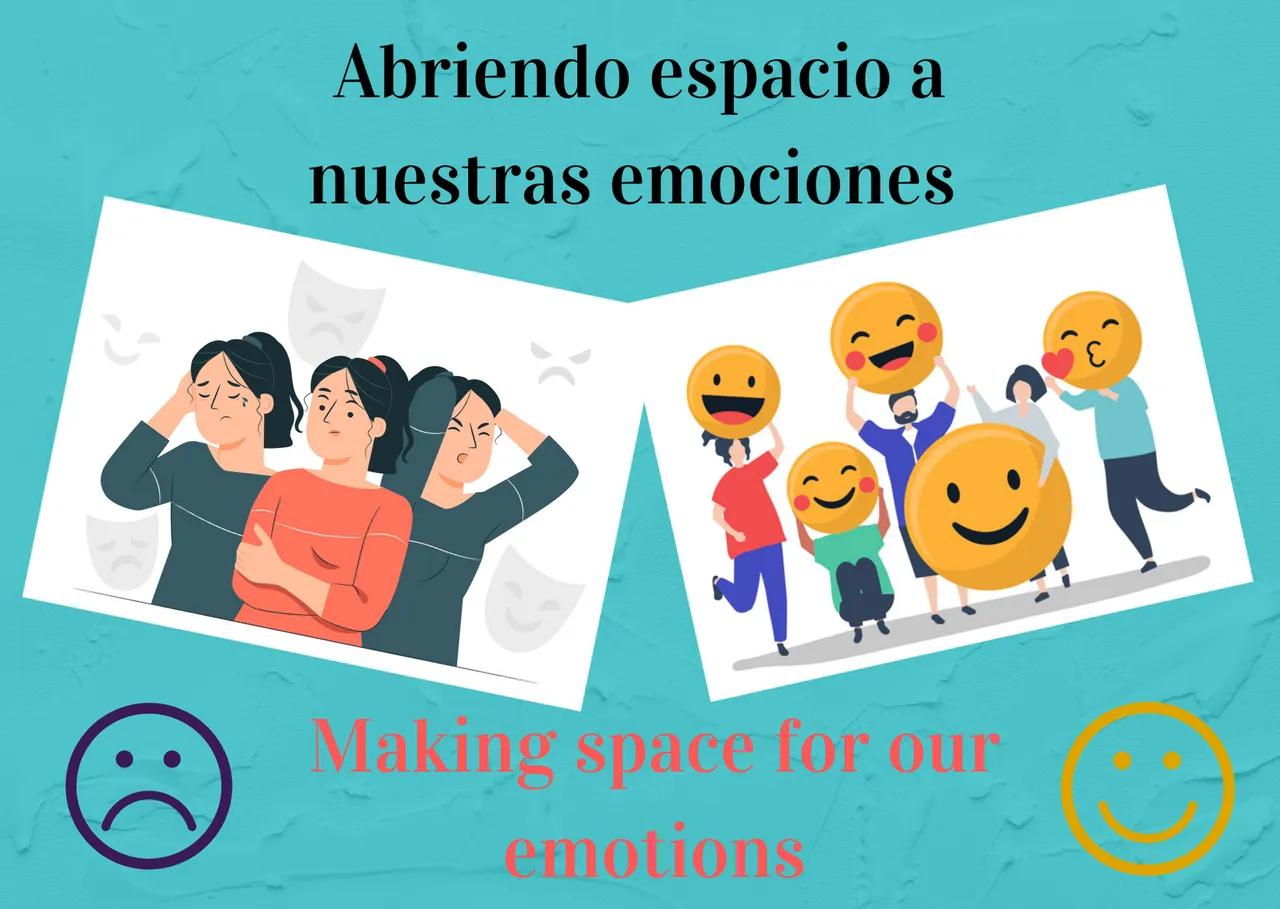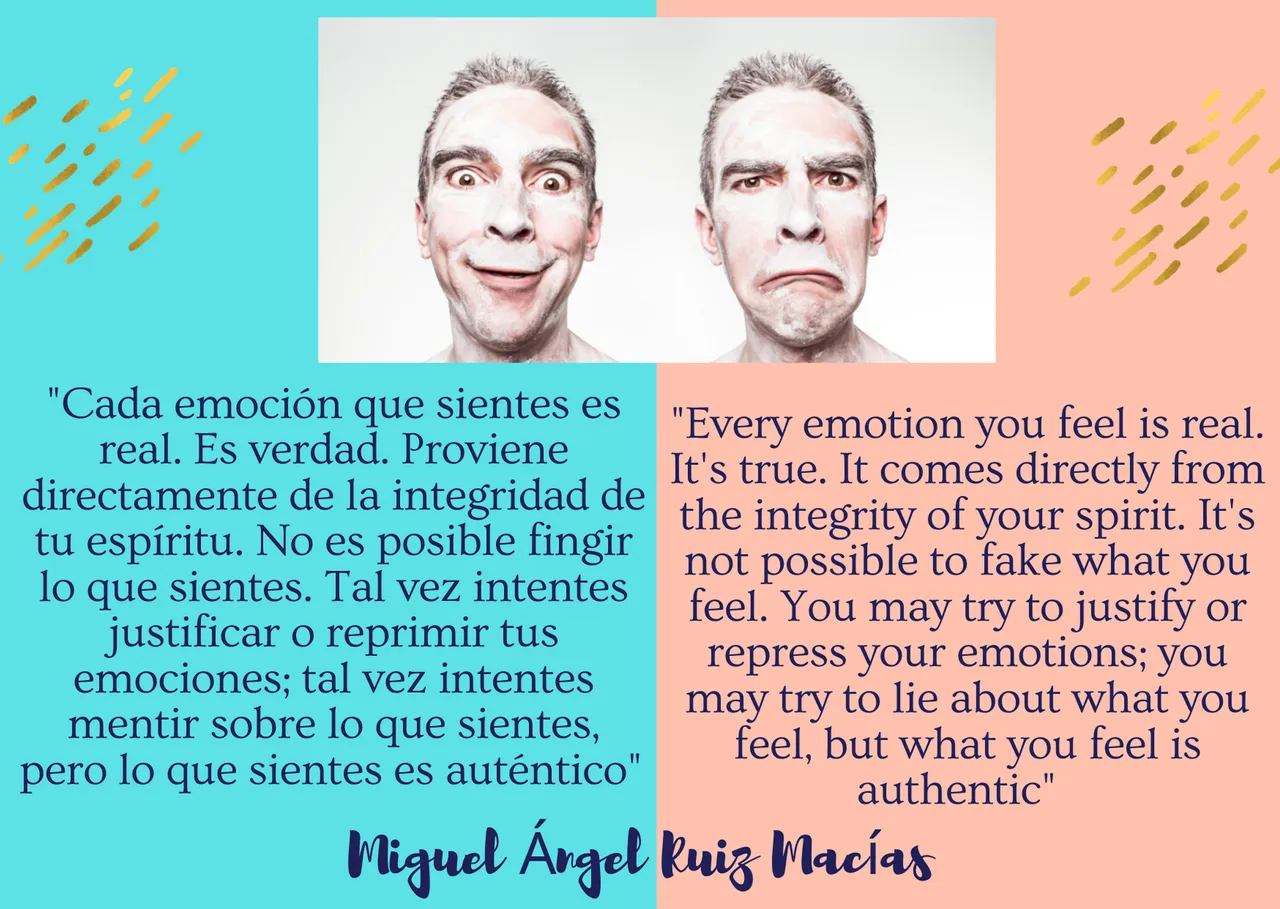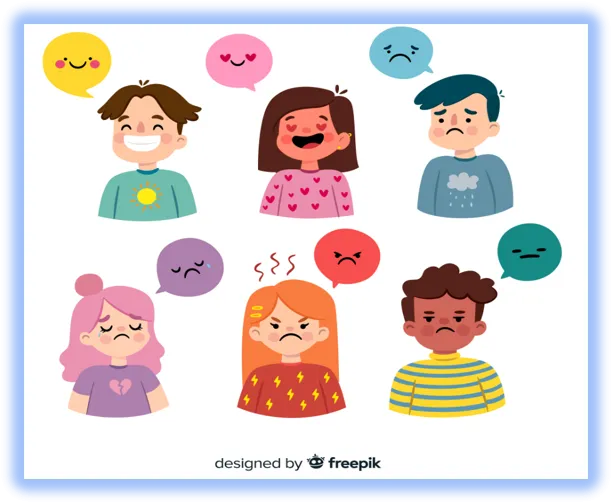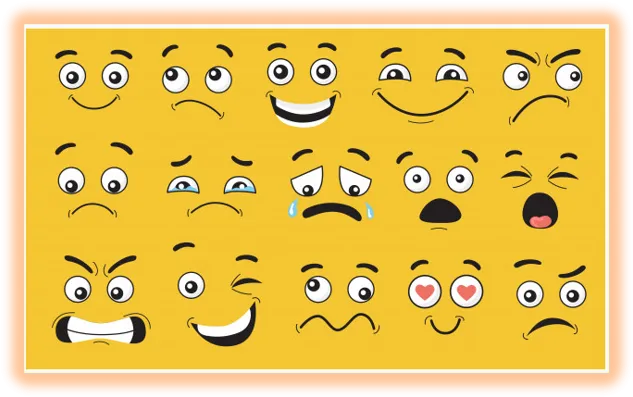
Fuente/ Source: Freepik1, Freepik2
Columna semanal Coordenadas de Bienestar
Somos seres sociables por naturaleza, es por ello que la dimensión emocional ocupa un espacio muy importante en nuestras vidas. A diario interactuamos con nuestro entorno, nos guste o no somos miembros de diferentes grupos (familiar, amistades, laborales, vecinales, deportivos, etc.), somos parte de una sociedad y por ello mantener un entorno emocional saludable, sin dinámicas disfuncionales nos va a ayudar a alcanzar un estado de bienestar y armonía interior.
Esta semana dedicaremos un espacio a la dimensión emocional, si bien aún hay muchas cosas que abordar de la dimensión física iremos sumando un poco de cada una de ellas en cada columna porque en definitiva no hay un orden para abordarlas y todas se entrelazan.
La dimensión emocional no hace referencia únicamente a la capacidad de sentir emociones, sino también de identificarlas tanto en nosotros como en los demás y saber qué es lo que estamos experimentando en un determinado momento y su causa, además de desarrollar la asertividad para manejarnos con ellas adecuadamente, dándole a cada una su lugar.
Weekly column Guidelines for Wellness
We are sociable beings by nature, that is why the emotional dimension occupies a very important space in our lives. We interact daily with our environment, whether we like it or not we are members of different groups (family, friends, work, neighborhood, sports, etc.), we are part of a society and therefore maintaining a healthy emotional environment, without dysfunctional dynamics will help us to achieve a state of wellbeing and inner harmony.
This week we will dedicate a space to the emotional dimension, although there are still many things to address from the physical dimension, we will add a little of each of them in each column because there is no order to address them and they are all intertwined.
The emotional dimension does not only refer to the ability to feel emotions, but also to identify them both in ourselves and in others and to know what we are experiencing at a given moment and their cause, as well as to develop the assertiveness to handle them properly, giving each one its place.

Fuente/ Source: Pexels
Según Wikipedia las emociones son "reacciones psicofisiológicas que representan modos de adaptación del individuo cuando percibe un objeto, persona, lugar, suceso o recuerdo importante", adicionalmente señala que a nivel fisiológico, las emociones organizan rápidamente las respuestas de distintos sistemas biológicos, incluidas las expresiones faciales, los músculos, la voz, la actividad del sistema nervioso autónomo y la del sistema endocrino.
Etimológicamente la palabra "Emoción" viene del latín "Motere" que significa "moverse", y dada la definición anterior en la que se destacan los efectos que pueden producir las emociones en nuestro organismo, podemos darnos cuenta porque hacen que nos acerquemos o nos alejemos a una determinada persona o circunstancia.
Por ejemplo, ante una situación que suponga para nosotros un riesgo, se dispara la emoción del "miedo" y esto nos hace reaccionar de determinada forma ante esa circunstancia. Es por ello que todas las emociones son esencialmente impulsos a la acción, cada una de ellas nos mueve hacia un determinado tipo de conducta.
Las emociones son el resultado de un estímulo, ya sea interno o externo, es por ello que mejorar esta dimensión implica adquirir un mayor autoconocimiento.
According to Wikipedia emotions are "psychophysiological reactions that represent modes of adaptation of the individual when perceiving an important object, person, place, event or memory ", additionally it points out that at the physiological level, emotions rapidly organize the responses of different biological systems, including facial expressions, muscles, voice, autonomic nervous system activity and endocrine system activity.
Etymologically the word "Emotion" comes from the Latin "Motere" which means "to move", and given the above definition which highlights the effects that emotions can produce in our organism, we can realize why they cause us to move towards or away from a certain person or circumstance.
For example, before a situation that supposes a risk for us, the emotion of "fear" is triggered and this makes us react in a certain way before that circumstance. That is why all emotions are essentially impulses to action, each one of them moves us towards a certain type of behavior.
Emotions are the result of a stimulus, whether internal or external, which is why improving this dimension implies acquiring greater self-knowledge.

Fuente/ Source: Freepik

Según investigaciones realizadas sobre este tema, se evidencia que al menos diez sentimientos se experimentan en todo el mundo: alegría, ira, enojo, miedo, sorpresa y tristeza, interés, vergüenza, desprecio y culpa, es decir, son considerados como emociones universales. Sin embargo, se habla de 6 categorías básicas de emociones:
• Miedo
• Sorpresa
• Aversión
• Ira
• Alegría
• Tristeza
Según la filosofía de Un Curso de Milagros (UCDM) esos estados pueden resumirse en dos: Amor y Miedo, cada uno de ellos arropa el sinfín de emociones que podemos experimentar, por ejemplo si estoy vibrando en paz, alegría, armonía, bienestar, compasión, respeto estoy en Amor, mientras que si estoy conectado con ira, agresión, depresión, frustración, pérdida, mezquindad, carencia, etc., estoy vibrando con la emoción del Miedo.
Ubicarnos en estos dos estados del Ser como punto de partida, nos puede dar una práctica guía en este camino de auto-conocimiento. Quien está en Amor, se reconoce como una extensión de su Creador, compartiendo la misma naturaleza de Luz y por ende, está conectado con el Amor Universal que a su vez es dicha, Gracia, Paz, Armonía. En contraposición, estar en Miedo es vibrar con el Ego y esto abarca todos los estados negativos, como ira, odio, rencor, depresión, insatisfacción, queja, entre otros.
Ahora bien, no es condenable estar en las emociones del miedo, de hecho, lo mejor que podemos hacer cuando se presentan este tipo de emociones es experimentarlas y abrigarlas, observarlas y darles cabida y luego buscar un espacio de reflexión donde pueda pasar del estado del miedo al amor, si las reprimimos o tratamos de ignorarlas lo que haremos es encapsularlas dentro de nuestro cuerpo y esto sería contraproducente para nuestra salud.
Sin embargo, podemos evitar llevar estas emociones al extremo e incluso debemos evitar que ellas se apoderen de nosotros y nos dominen. Un buen ejercicio de conciencia antes de reaccionar impulsivamente ante algo, es preguntarte desde qué estado del Ser vas a responder y eso determinará los resultados que vas a obtener. Pregúntate:
¿Cómo quiero vivir hoy?
¿Estoy viviendo desde el Amor o desde el Miedo?
¿Desde dónde hago “esto” o “aquello”?
¿Esto que voy a decir o hacer desde qué emoción va a salir de mí?
According to research on this subject, it is evident that at least ten feelings are experienced worldwide: joy, rage, anger, fear, surprise and sadness, interest, shame, contempt and guilt, i.e., they are considered universal emotions. However, there are 6 basic categories of emotions:
- Fear
- Surprise
- Aversion
- Anger
- Joy
- Sadness
According to the philosophy of A Course in Miracles (UCDM) these states can be summarized in two: Love and Fear, each of them encompasses the myriad of emotions that we can experience, for example if I'm vibrating in peace, joy, harmony, well-being, compassion, respect I'm in Love, while if I'm connected with anger, aggression, depression, frustration, loss, pettiness, lack, etc., I'm vibrating with the emotion of Fear.
Placing ourselves in these two states of Being as a starting point can give us a practical guide on this path of self-knowledge. Whoever is in Love, recognizes himself as an extension of his Creator, sharing the same nature of Light and therefore, is connected with Universal Love which in turn is Bliss, Grace, Peace, Harmony. In contrast, to be in Fear is to vibrate with the Ego and this encompasses all negative states, such as anger, hatred, resentment, depression, dissatisfaction, complaint, among others.
Now, it is not condemnable to be in the emotions of fear, in fact, the best thing we can do when these types of emotions arise is to experience and cherish them, observe and give them a place and then seek a space for reflection where we can move from the state of fear to love, if we repress them or try to ignore them what we will do is to encapsulate them within our body and this would be counterproductive to our health.
However, we can avoid taking these emotions to the extreme and we should even prevent them from taking over and dominating us. A good exercise of awareness before reacting impulsively to something, is to ask yourself from which state of Being you are going to respond and that will determine the results you are going to get. Ask yourself:
How do I want to live today?
Am I living from Love or from Fear?
From where I do "this" or "that"?
What emotion will come out of me when I say or do what I am going to say or do?

Fuente/ Source: Freepik

Reto para esta semana:
En las siguientes columnas estaremos abordando varios temas relacionados con las emociones, pero con lo conversado hasta ahora pudiéramos hacer un primer ejercicio de reflexión basado en estas preguntas:
¿Puedes descifrar tus emociones e identificar lo que te está ocurriendo en un momento dado?
¿Logras identificar en tu cuerpo las reacciones que se producen ante una determinada emoción?
¿Te dejas dominar por tus emociones o logras tener un buen conocimiento y manejo de ellas?
Recuerda que tu participación en la Columna es valorada por @elcomentador, quiénes seleccionarán 5 comentarios para apoyarlos con su cuenta.
Además estaremos premiando algunos comentarios con Lotus. Participar es muy sencillo, solo escribe tu respuesta en la caja de comentarios. Puedes también hacer reblog de esta publicación para fomentar la participación de más Hivers en la columna.
Ten en cuenta algunos lineamientos que debes seguir para hacer un buen comentario, descritos en esta publicación de @elcomentador.
Challenge for this week:
In the following columns we will be addressing various topics related to emotions, but with what we have discussed so far we could do a first exercise of reflection based on these questions:
Can you decipher your emotions and identify what is happening to you at any given moment?
Are you able to identify in your body the reactions that are produced before a certain emotion?
Do you let yourself be dominated by your emotions or do you have a good knowledge and management of them?
Remember that your participation in the Column is valued by @elcomentador, who will select 5 comments to support them with their account.
We will also be rewarding some comments with Lotus. Participating is very easy, just write your answer in the comment box. You can also reblog this post to encourage more Hivers to participate in the column.
Keep in mind some guidelines you should follow to make a good comment, described in this post from @elcomentador.


Estamos muy contentos por la participación que tuvimos en los comentarios de nuestra Columna anterior. Agradecemos a: @numa26, @yenmendt, @fragozar01, @isabelpena, @care1869, @emybaby, @ayleenr, @carmenm20, @nanodj, @tibaire, @psyfire25, @carlagonz, @sirenahippie, @jcrodriguez, @surglen, @miguelmederico, @juanzod, @soychalbed @lisfabian, @garybilbao por compartirnos sus experiencias sobre el tema y acompañarnos esta semana.
Deseamos compartir 30 Lotus para: @fragozar01, @ayleenr y @garybilbao (10 lotus cada uno).
Nuestro aliado @elcomentador estará publicando próximamente los comentarios que resultaron seleccionados por su equipo de la Columna anterior.
We are very pleased with the participation we had in the comments of our previous Column. We thank: @numa26, @yenmendt, @fragozar01, @isabelpena, @care1869, @emybaby, @ayleenr, @carmenm20, @nanodj, @tibaire, @psyfire25, @carlagonz, @sirenahippie, @jcrodriguez, @surglen, @miguelmederico, @juanzod, @soychalbed @lisfabian, @garybilbao for sharing their experiences on the topic and joining us this week.
We wish to share 30 Lotus for: @fragozar01, @ayleenr and @garybilbao (10 lotus each).
Our ally @elcomentador will be publishing soon the comments that were selected by his team from the previous column.
Recuerda unirte a nuestras cuentas: @hispapro y @miriannalis en #Hive y Twitter para que estés informado de todas las actividades que tenemos planeadas para ti.
Remember to join our accounts: @hispapro and @miriannalis on #Hive and Twitter to be informed of all the activities we have planned for you.


- Traducción realizada con www.DeepL.com / Translated with www.DeepL.com/Translator
- Banners elaborados en Canva con los recursos disponibles en su versión gratuita / Banners elaborated in Canva with the resources available in its free version.
Publicaciones anteriores / Previous publications:






